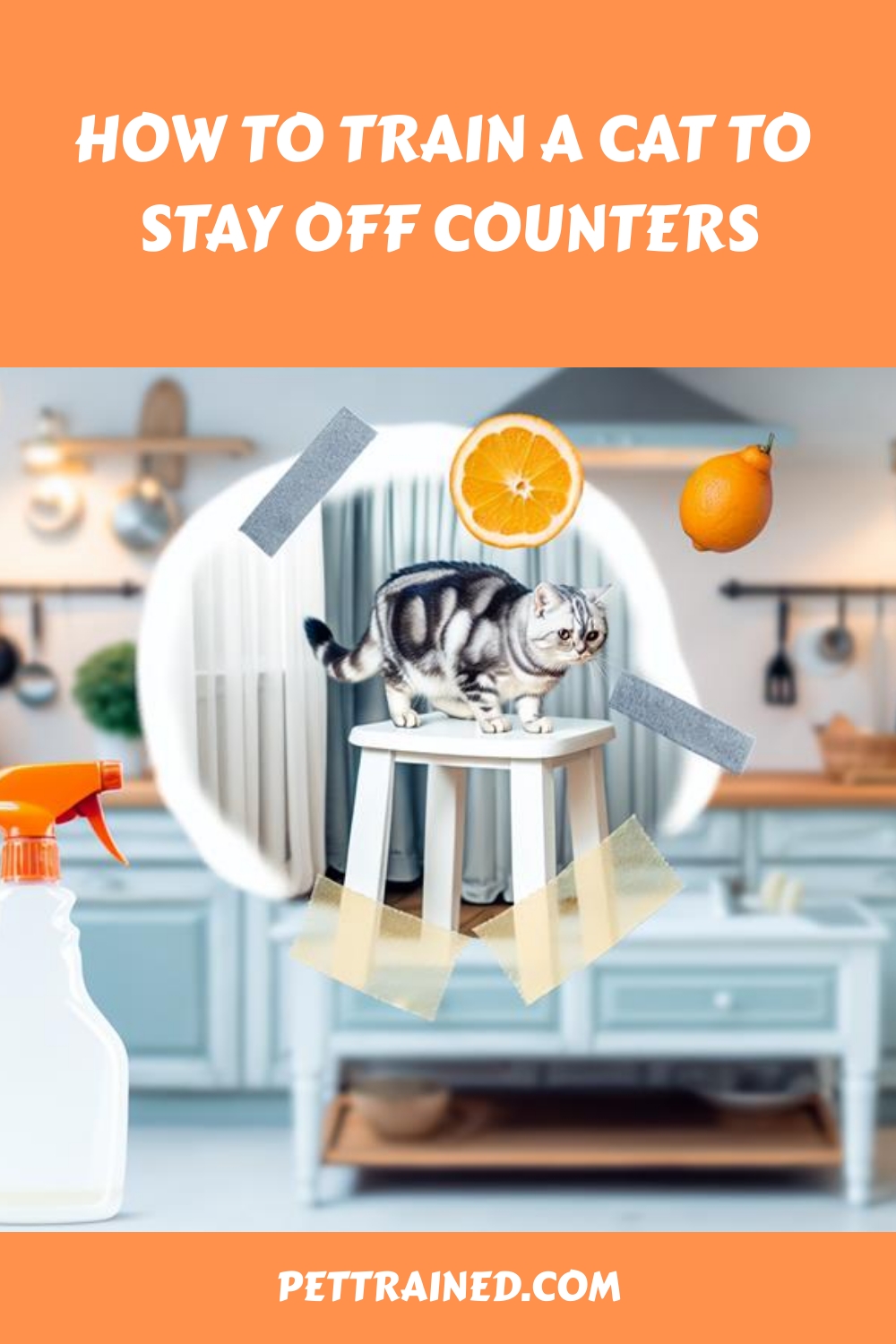To train your cat to stay off counters, start by offering alternative elevated areas like cat shelves or trees. Use safe deterrents such as double-sided tape or motion-triggered sprays.
Clean counters regularly to eliminate any temptations. Consistently reward your cat with treats and praise for staying off the counters.

Implement a predictable routine with specified playtimes to keep your cat engaged. Use commands and clicker training to reinforce boundaries. Consistency among all household members is crucial. Explore these methods to keep your cat off counters and maintain a harmonious home environment.
Table of Contents
Key Takeaways
- Provide cat shelves or trees as alternative high spots to deter cats from counters.
- Use safe deterrents like double-sided tape or motion-activated sprays to discourage counter-jumping.
- Reward positive behavior with treats and praise to reinforce staying off counters.
- Keep counters clean and free of food or spills to reduce attraction.
- Establish a consistent routine with interactive play sessions and scheduled feeding times.
Understand Why Cats Climb

Cats climb counters because they’re naturally curious and seek high vantage points to survey their territory. Understanding feline behavior is key to addressing this issue.
Cats have an instinctual need to explore and find elevated spots to feel secure and observe their surroundings. This behavior is deeply rooted in their wild ancestry, where height provided both safety from predators and an advantage for hunting.
This post contains affiliate links. However all the information provided on this site are my own honest opinions. See more in Disclaimer.
From a cat psychology perspective, climbing patterns reveal a lot about their need for environmental enrichment. When a cat lacks stimulation or feels bored, they’ll often turn to climbing as a form of entertainment and exercise.
Counters, with their elevated perspective and array of interesting objects, become an irresistible playground. To understand why your cat is drawn to these high places, observe their daily activities and triggers.
Do they jump on the counter when you’re cooking, or are they seeking a sunny spot near a window? Once you identify the underlying reasons, you can better address the behavior.
Provide Alternative High Spots
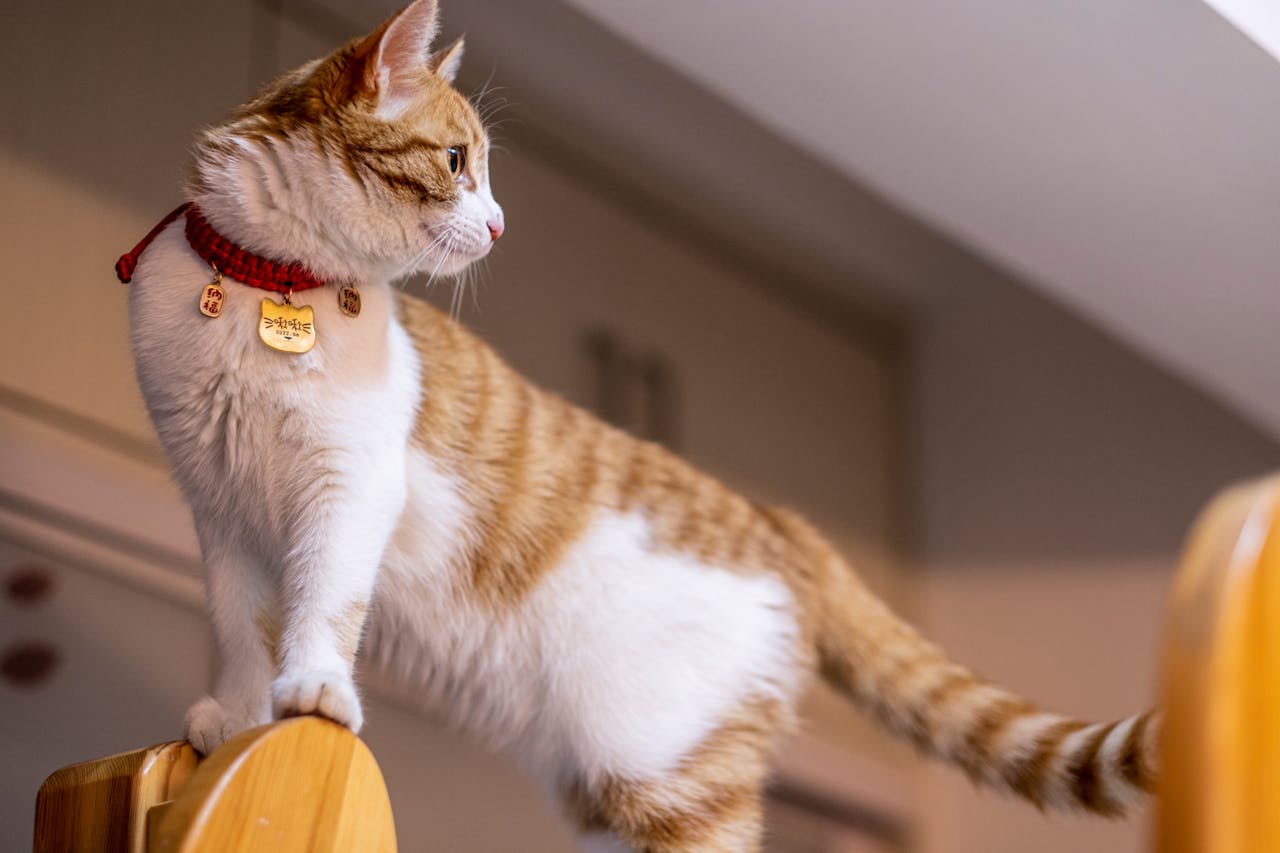
To deter your cat from counters, present alternative high spots such as cat shelves or trees.
These elevated areas fulfill your cat’s instinct to climb and survey their environment, redirecting their behavior positively.
Install Cat Shelves
Consider installing cat shelves to give your feline friend an appealing alternative to your countertops. Cat shelves offer a fantastic way to cat-proof your kitchen while adding creative solutions to your home decor.
Also See:
DIY cat shelves can be a fun project that also helps maintain your countertops free from feline visitors. Here are some practical tips to help you get started:
- Location: Place the shelves in areas where your cat already likes to climb or near windows for an engaging view.
- Safety: Guarantee the shelves are securely mounted and can support your cat’s weight. Use wall anchors if necessary.
- Comfort: Add soft mats or padding to make the shelves more inviting. Your cat will appreciate the extra comfort.
- Pathways: Create a series of connected shelves to allow your cat to navigate different heights and spaces easily.
Use Cat Trees
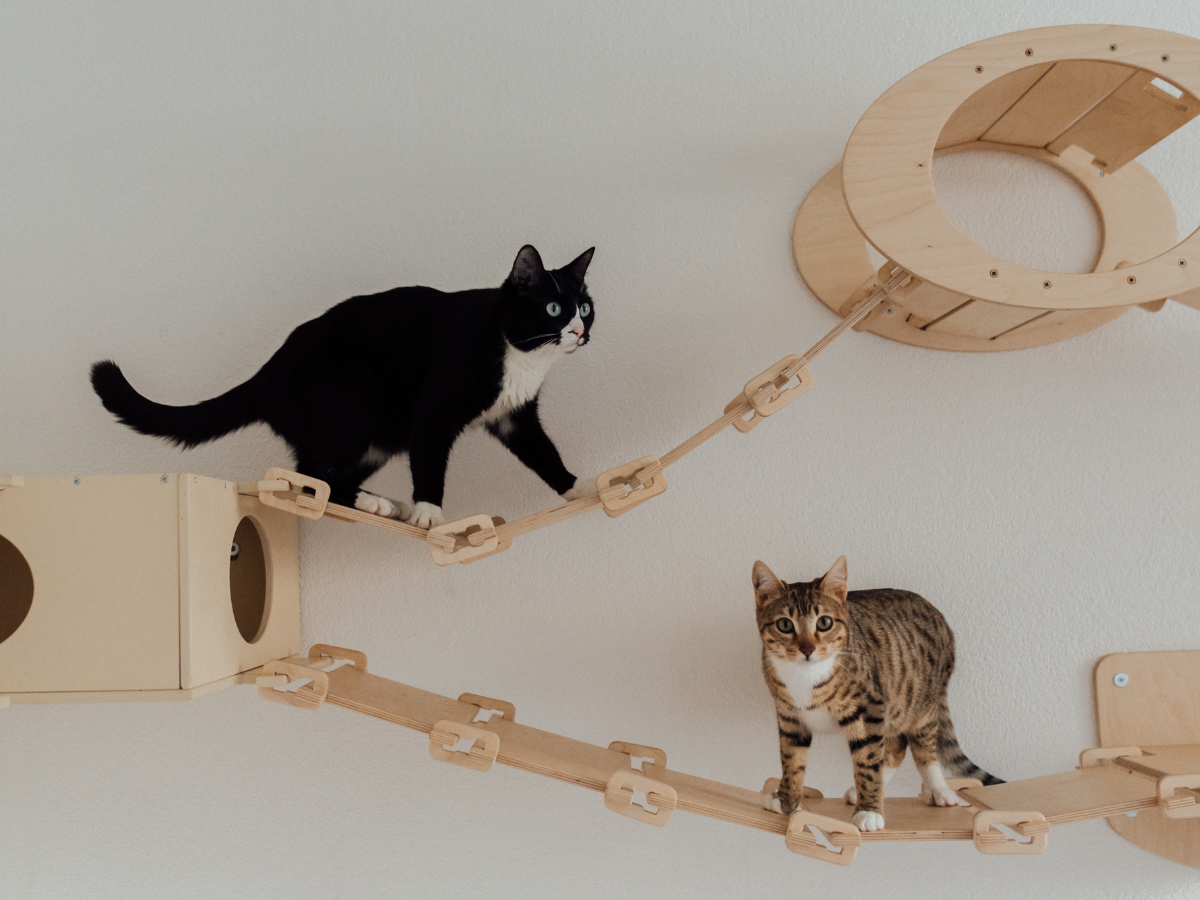
Elevate your cat’s experience by introducing cat trees, which offer an enticing and practical alternative to countertops. Cat trees provide a designated high spot where your feline can perch, observe, and play, mimicking their natural desire to climb and survey their territory.
These structures not only fulfill your cat’s instinctual needs but also divert their attention away from your kitchen counters, making them a cornerstone in effective counter training strategies. One of the main cat tree benefits is that they come in various shapes and sizes, catering to different spaces and budgets.
Whether you choose a compact model for a small apartment or a multi-level tower for a spacious home, the key is to make it more appealing than your countertops. Place the cat tree near windows or in rooms where you spend a lot of time to make it even more attractive.
Counter training challenges often stem from a lack of suitable alternatives for your cat. By providing a cat tree, you’re offering a satisfying substitute that deters them from jumping onto forbidden surfaces. Remember, consistency is vital.
Reinforce positive behavior with treats and praise, making the cat tree the go-to spot for your furry friend.
Use Deterrents Effectively

To keep your cat off counters, choose safe deterrents like double-sided tape or motion-activated sprays.
Apply these methods consistently to reinforce the behavior change.
Monitor your cat’s behavior closely to guarantee the deterrents are effective and adjust as needed.
Choose Safe Deterrents
When training your cat to stay off counters, it’s important to use safe deterrents that effectively dissuade them without causing harm. There are several options that can help keep your feline friend off your kitchen surfaces while preserving their well-being.
Cat Toys: Distract your cat with engaging toys. Providing them with alternatives like interactive cat toys can divert their attention from the counters to more suitable play areas.
Water Spray: A gentle water spray can be an immediate deterrent. Cats typically dislike water, so a quick spritz when they jump on the counter can teach them that the area is off-limits. Make sure the spray bottle is set to a fine mist to avoid causing distress.

Sticky Tape: Placing double-sided sticky tape on counter edges can make the surface uncomfortable for your cat. They’ll quickly learn to associate the sticky sensation with the counters and avoid them.
Scent Deterrents: Cats have a strong sense of smell. Using scents they dislike, such as citrus or eucalyptus, can make counters unappealing. You can easily create a spray using diluted essential oils.
Consistently Apply Methods

Implementing deterrents is only effective if you consistently apply them every time your cat attempts to jump on the counters. Cats are creatures of habit, and inconsistent use of deterrents can confuse them and undermine your training efforts.
When a cat learns that counter-jumping occasionally results in an unpleasant experience, it’s less likely to take the risk. Using a reward system is essential for reinforcing the desired behavior. When your cat stays off the counters, immediately reward it with a treat or affection.
This positive reinforcement encourages your cat to repeat the behavior you want. The combination of deterrents and rewards forms the backbone of effective behavioral training.
For deterrents, consider options like double-sided tape, aluminum foil, or motion-activated air sprays. Each method creates an environment that’s unpleasant for the cat, discouraging it from jumping up. But remember, consistency is key. If you remove these deterrents too soon or only apply them sporadically, your cat won’t make the connection.
To achieve long-term success, make sure everyone in your household is on the same page. Consistent application of both deterrents and rewards will make your training efforts more effective, leading to a well-behaved cat.
Monitor Cat’s Behavior
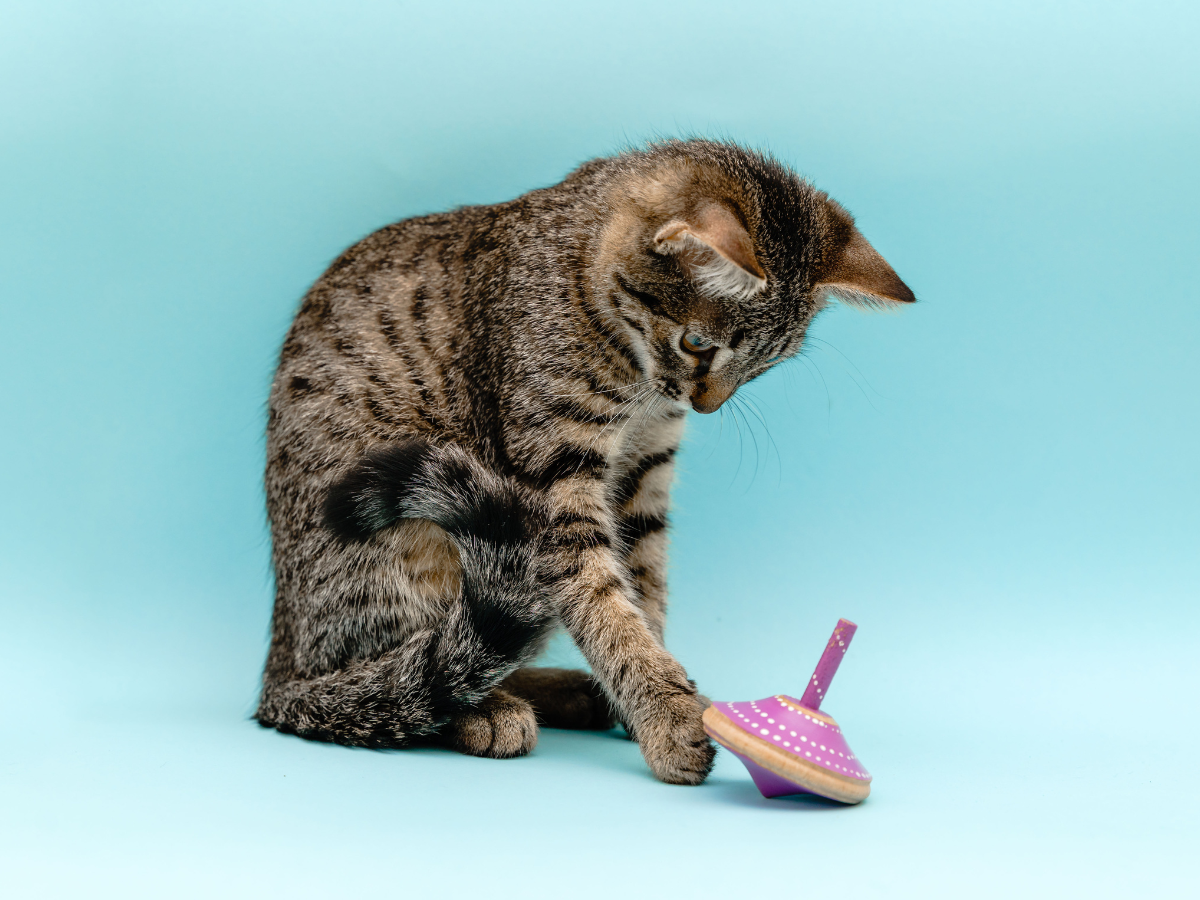
Keep a close watch on your cat’s behavior to effectively use deterrents and validate they’re working as intended. Monitoring your cat’s actions is essential for behavior modification and making sure the reward system is effective. By observing your cat consistently, you can adjust your methods and improve training results.
Here’s how you can enhance your observation skills and guarantee training consistency:
- Track Patterns: Note when and why your cat jumps on counters. Understanding these patterns helps you target specific triggers.
- Use Effective Deterrents: Apply deterrents like double-sided tape or motion-activated sprays on counters. These tools discourage your cat from jumping up.
- Reward Positive Behavior: When your cat stays off the counters, immediately reward them with treats or affection. This strengthens the reward system.
- Adjust as Needed: If a deterrent isn’t working, switch to another method. Stay flexible and attentive to what best influences your cat’s behavior.
Consistent observation helps you detect subtle changes in your cat’s behavior, allowing timely adjustments. Effective behavior modification relies on a steady balance of deterrents and rewards. By honing your observation skills and maintaining training consistency, you’ll teach your cat to stay off counters successfully.
Employ Positive Reinforcement

Reward your cat with treats and praise whenever they stay off the counters. This method of rewarding behavior strengthens their understanding of what actions are acceptable. Clicker training can be particularly effective in this process.
Trending in Cats:
Use a clicker to signal when your cat makes the right choice, then immediately follow it with a treat. This creates a clear association between the click sound, the desired behavior, and the reward. Setting boundaries is essential.
Establish specific areas where your cat is allowed and consistently enforce these boundaries. Redirecting behavior is key here; if your cat jumps on the counter, gently move them to a designated area like a cat tree or a safe perch.
Reward them once they’re in the acceptable spot. Patience and consistency are your best tools. Cats learn through repetition and positive reinforcement, so keep at it.
It’s also important to make sure that alternative spaces are appealing and comfortable for your cat.
Keep Counters Clean
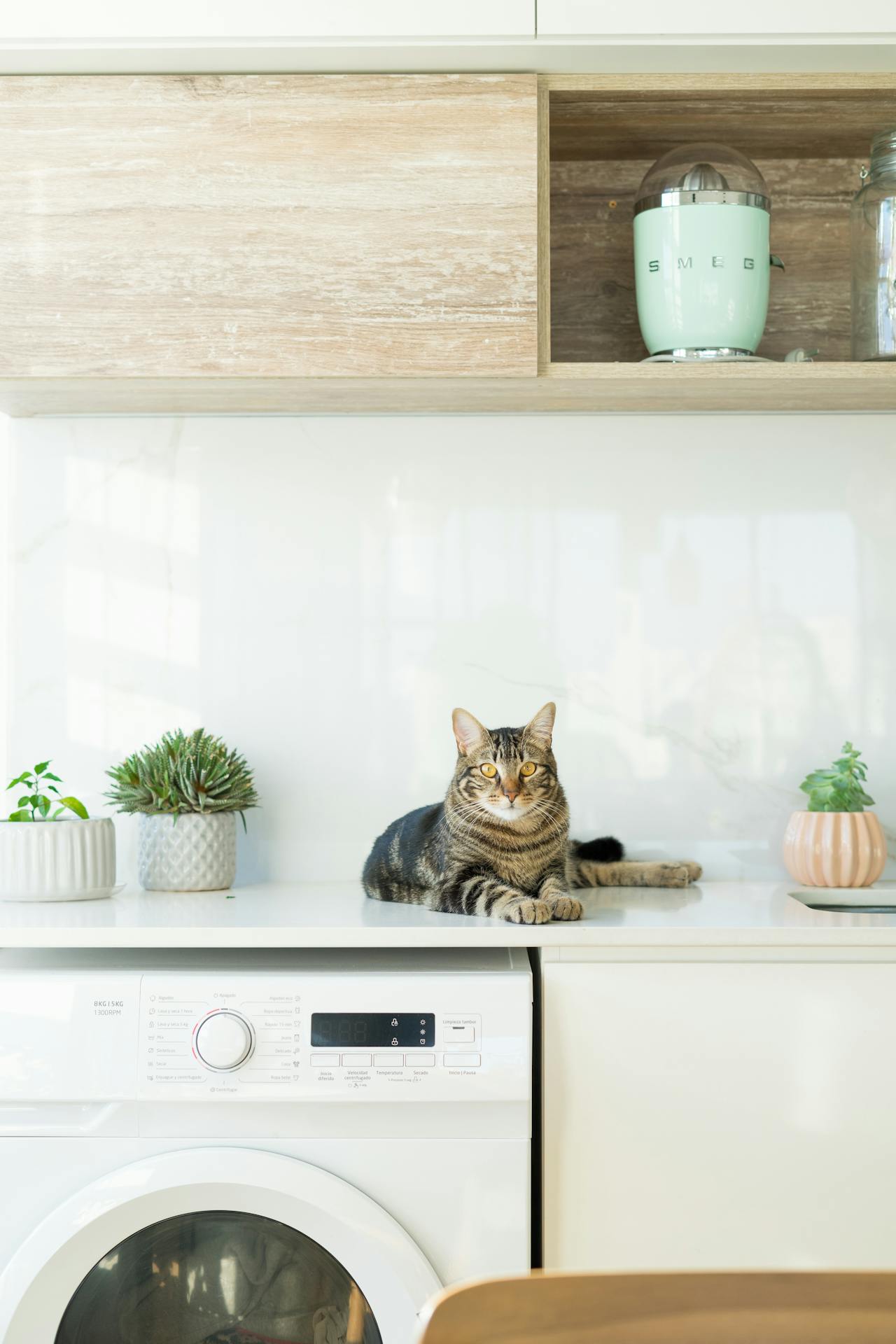
A clean counter is less tempting for your cat, so make sure to wipe away crumbs and spills regularly. Cats are naturally curious and often attracted to food remnants. By keeping your counters spotless, you remove the incentive for them to explore these surfaces.
Immediate Cleanup: After preparing food, immediately clean up any spills or crumbs. This prevents your cat from finding anything interesting to investigate.
Proper Food Storage: Store all food items in sealed containers and promptly put them away. Leaving food out, even for a short time, can attract your cat.
Non-Food Items: Keep non-food items like dish rags, sponges, or even tempting small kitchen gadgets off the counters. Cats might get curious and jump up to play with these objects.
Scent Deterrents: Use natural scent deterrents like citrus or vinegar to clean your counters. Cats dislike these smells and will be less likely to jump up.
Create a Routine

To reinforce your efforts, establish a consistent routine that discourages your cat from jumping on the counters.
Start by creating a daily schedule that includes regular playtime routines. Engaging your cat in stimulating activities can reduce their urge to explore counters out of sheer boredom.
Incorporate interactive toys and scheduled play sessions to keep them active and satisfied.
Next, implement a reward system. When your cat stays off the counters, reward them with a treat or affection. This positive reinforcement helps them associate good behavior with enjoyable outcomes. Be consistent with this approach to make the connection clear.
Bedtime habits also play a crucial role. Establish a calm, predictable routine to wind down the day. This could include a final play session followed by a treat before bed. A tired cat is less likely to seek out the counters for entertainment.
Consistency is key. Stick to your daily schedule and reward system to reinforce the desired behavior. Over time, your cat will learn that staying off the counters is both expected and rewarding. By integrating these strategies into your routine, you’ll create a harmonious environment where your cat respects household boundaries.
Train With Commands
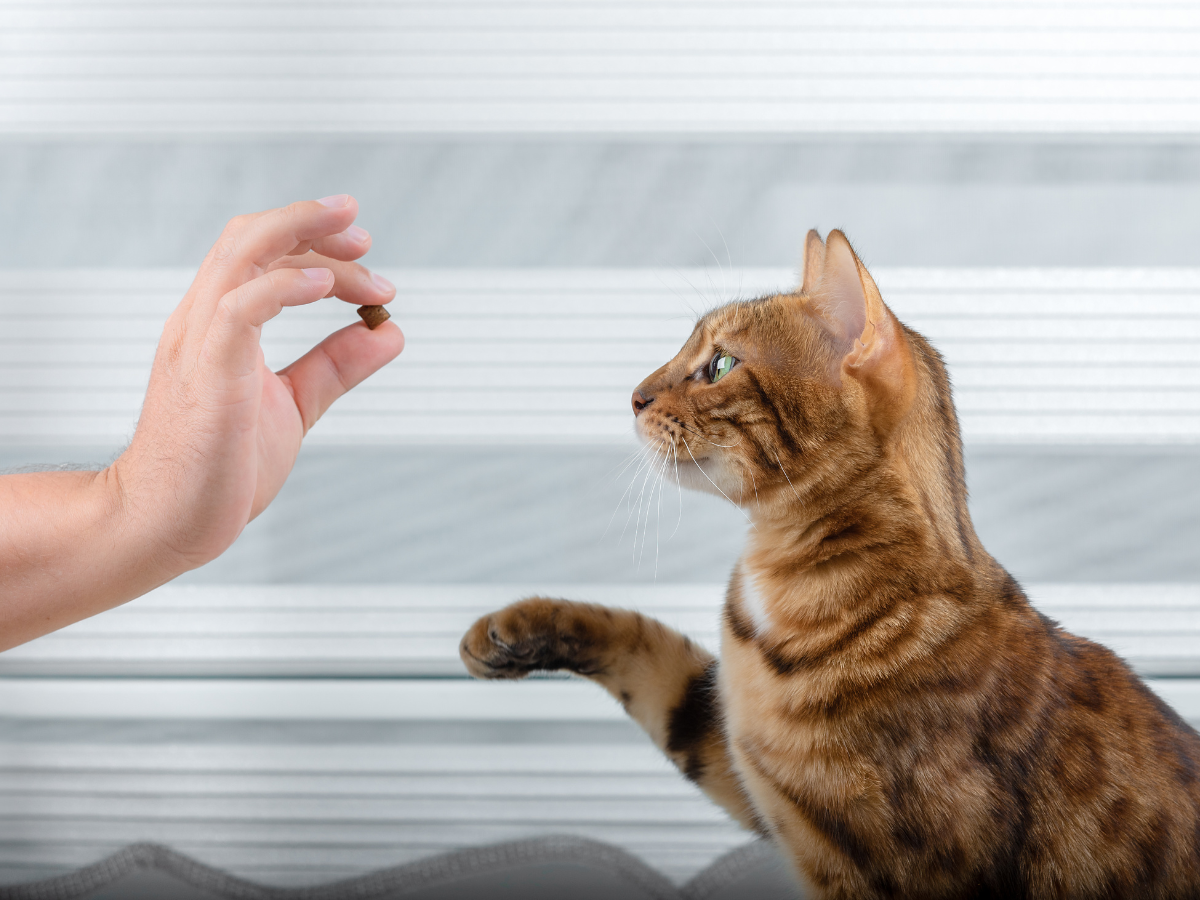
Teaching your cat specific commands can be an effective way to keep them off the counters. Start with clicker training and treat rewards to make the learning process engaging for your cat.
Here’s a step-by-step guide to get you started:
- Introduce Clicker Training: Use a clicker to mark the behavior you want to reinforce. When your cat jumps off the counter following your command, immediately click and give a treat reward. This helps them associate the click with positive reinforcement.
- Use Vocal Commands: Consistency is key. Choose a simple command like “off” and use it every time you catch your cat on the counter. Combine this with the clicker and treat to reinforce the desired behavior.
- Incorporate Body Language Cues: Sometimes, vocal commands alone aren’t enough. Use body language cues such as pointing to the floor or gently guiding your cat off the counter. This visual aid can help reinforce what you’re asking.
- Practice Regularly: Training sessions should be short and frequent. Dedicate a few minutes each day to practice commands. Over time, your cat will learn to stay off the counters in response to your commands.
Ensure Consistency

Consistency is key when training your cat to stay off counters. Cats thrive on routines and can easily revert to old habits if you’re inconsistent.
Establish a clear reward system that reinforces positive behavior every time your cat chooses to stay on the floor or another designated area. Reward them immediately with treats or affection to help them associate good behavior with rewards.
Keep a close watch on your cat’s behavior patterns, especially during specific times like meal prep when they may be more tempted to jump on counters.
Consistency also requires all household members to be on the same page. Mixed signals, such as allowing the cat on the counter by one person while others don’t, can undermine your training efforts.
Consistent use of commands is equally important. Use the same words and tone every time you instruct your cat to get down. With time, your cat will understand and respect these boundaries, leading to a well-behaved feline and a counter free of paw prints.
Frequently Asked Questions

Can Certain Cat Breeds Be More Difficult to Train off Counters?
Imagine trying to teach a fish to climb a tree; some cat breeds face similar training challenges. Breed differences and distinct cat personalities can make counter behavior hard to curb.
Tailor your approach to the individual cat’s needs.
How Long Does It Typically Take to Train a Cat to Stay off Counters?
The training progress varies, but with consistent training methods, you can often see success within a few weeks.
Be patient and persistent; time and effort are key to keeping your cat off counters.
Are There Any Health Risks for Cats Frequently Jumping on Counters?
Imagine a cat leaping like a gymnast. Frequent jumping on counters could lead to health risks.
Prioritize counter cleanliness and behavior modification. Use training aids and deterrent options to protect your furry friend’s well-being.
Should I Use Physical Punishment if My Cat Climbs the Counter?
You shouldn’t use physical punishment if your cat climbs the counter. Instead, use positive reinforcement and behavioral techniques.
Consistency is key; redirecting behaviors with treats or toys works better and fosters a positive environment.
How Can I Involve My Family in the Training Process Effectively?
Involve your family by turning the training into a bonding activity. Use consistent training techniques and positive reinforcement.
Guarantee everyone uses the same commands and rewards, creating a unified approach that strengthens family bonding and cat behavior.
Conclusion
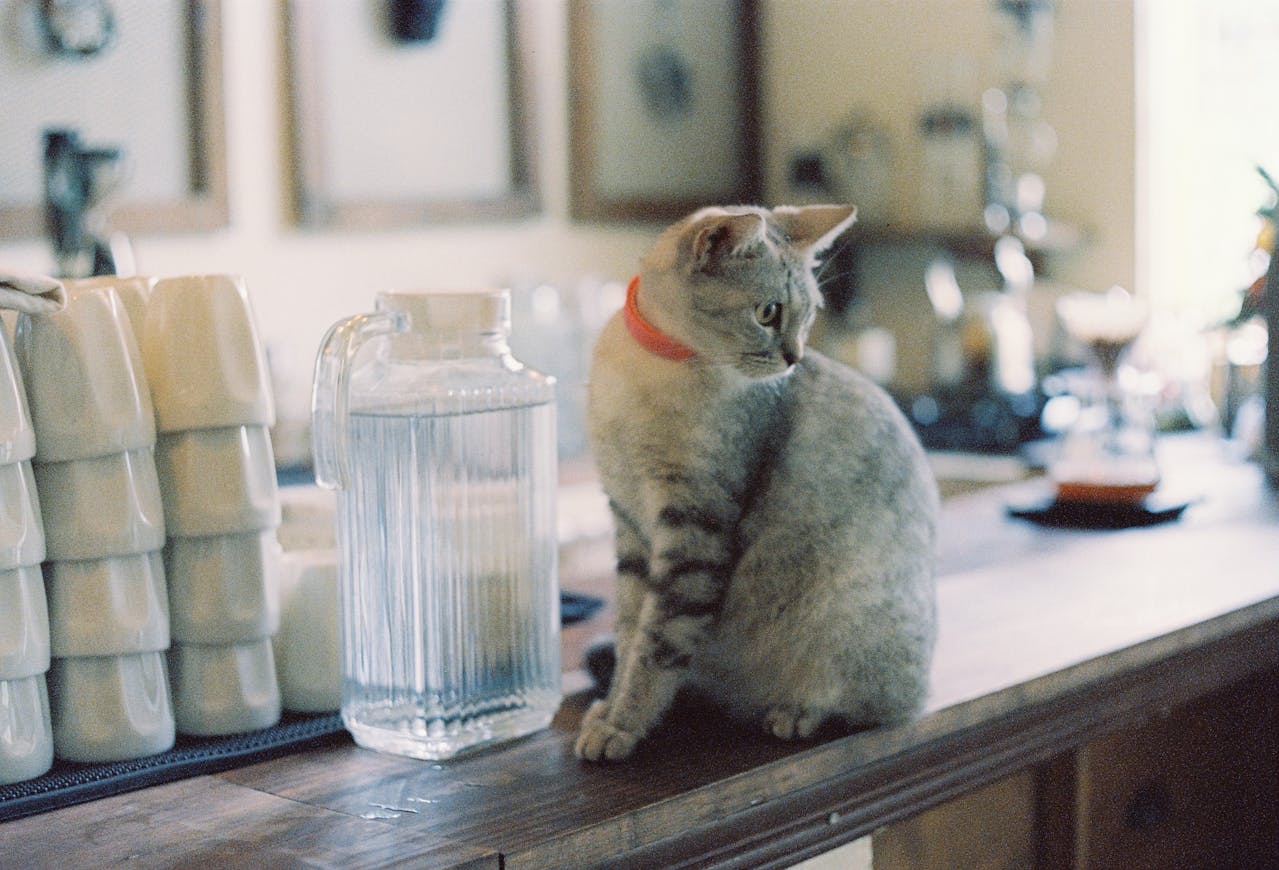
You’ve got this! Mastering cat counter-climbing takes commitment, consistency, and creativity.
By understanding why your cat climbs, offering alternative high spots, and using deterrents, you’re creating a cat-friendly environment.
Employ positive reinforcement, keep counters clean, and craft a routine. Train with clear commands and verify your efforts are constant.
With these tips, your furry friend will find fun elsewhere, leaving your countertops cat-free.
Stay patient and persistent—success is just around the corner!
